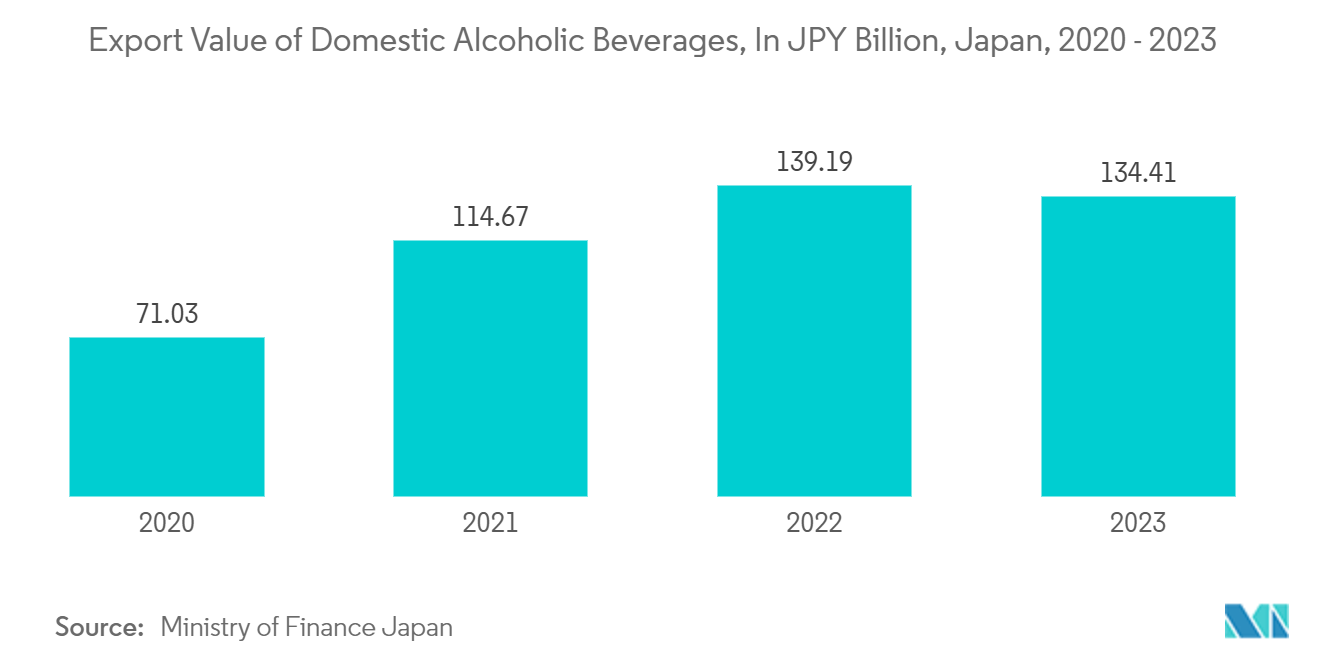Market Trends of Japan Container Glass Industry
Pharmaceutical Industry to Witness Significant Growth
- Japan ranks as the world's third-largest pharmaceutical market, following the United States and China. In light of its aging population, the Japanese government is expediting the approval process for innovative drugs and streamlining life science regulations. This strategy aims to strengthen both domestic and foreign pharmaceutical companies while attracting newcomers to Japan's market. The World Economic Forum highlights Japan's unique demographic, noting that over 10% of its population is aged 80 or older, making it home to the world's oldest populace.
- Adragos Pharma reports that as of May 2024, the market's lofty valuation underscores its immense potential and the deep trust it commands from healthcare consumers. Prominent U.S. pharmaceutical giants have cemented their presence in Japan, underscoring the market's openness to foreign entities, provided they meet Japan's rigorous quality benchmarks. With robust government support and a dynamic R&D landscape, biologics and patented drugs are set for substantial growth.
- Japan's pharmaceutical sector enforces rigorous visual inspections, specialized packaging, and meticulous labeling. The selection of materials and packaging technologies must not only comply with local regulations but also cater to consumer preferences. This is particularly crucial given the aging demographic in Japan, which favors user-friendly and senior-centric designs. As a result, glass, known for its ability to withstand high temperatures and chemical non-reactivity, sees heightened demand in the nation.
- By removing barriers to global investment, the Japanese government is fueling the expansion of its pharmaceutical market. With rising demand, Japan foresees an increased reliance on glass containers. Data from The Federation of Japan Pharmaceutical Wholesalers Association (JPWA) reveals a notable shift: the volume share of generics in Japan's prescription drug market climbed from 78.3% in 2020 to 80.2% in 2023.
- The market's expansion is further supported by a surge in glass container shipments across diverse sectors. Glass containers are preferred for packaging not only liquid pharmaceuticals and chemicals but also a wide array of perishable and non-perishable goods. Moreover, the Japanese government is nurturing this growth by relaxing regulations and promoting foreign investments.

Beverage Sales to Drive the Market Growth
- Glass stands out as the preferred material for packaging alcoholic beverages, especially spirits. Its distinct capability to maintain product aromas and flavors drives this preference. Tinted glass bottles, especially prominent in wine packaging, play a crucial role in shielding wine from sunlight. As wine consumption continues to rise, so too will the demand for glass packaging in the country during the forecast period.
- Japan's alcoholic beverage sector holds a significant position in the nation's beverage manufacturing arena. According to the Ministry of Finance Japan, exports of domestic alcoholic beverages jumped from JPY 71.03 billion (USD 670 million) in 2020 to JPY 134.41 billion (USD 1.27 billion) in 2023. This surge in alcoholic drink exports is poised to bolster the demand for glass containers domestically.
- Coca-Cola Japan is leading the charge in eco-friendliness, removing plastic labels from its beverages and cutting down energy consumption in its vending machines. This move is in line with Coca-Cola's recent global commitment to make 25% of its packaging recyclable by 2030. Their strategy emphasizes reusable packaging, especially returnable glass bottles, which is set to enhance the regional market for glass containers.
- Several cities in Japan are championing the recycling and reuse of glass bottles as part of their sustainability initiatives. For example, Circular Yokohama is an online platform aimed at boosting Yokohama city's economy. The Yokohama reuse bin project, spearheaded by the Yokohama City Resource Recycling Business Cooperative, focuses on creating reusable glass bottles. This initiative emphasizes local production and consumption, benefiting both the environment and the community.
- As consumers increasingly prioritize convenience and on-the-go options, packaging preferences are evolving. While glass bottles have traditionally been viewed as less convenient due to their weight and fragility compared to plastic or carton alternatives, they are now gaining popularity. This shift is largely due to advancements in packaging technology, such as lightweight designs and shatter-resistant coatings, making glass bottles more appealing to modern consumers. Consequently, the beverage sector is expected to embrace glass bottle packaging more widely, driving market growth.



